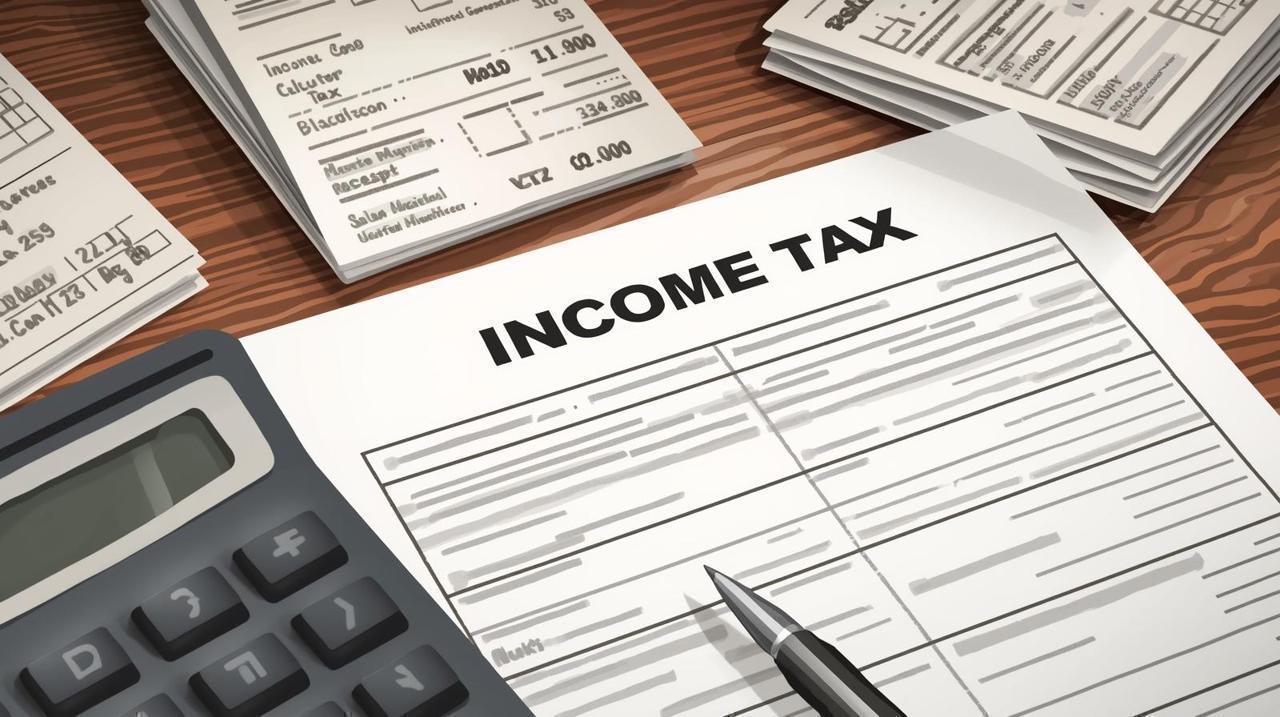
Post by : Sami Jeet
In our rapidly evolving digital landscape, side hustles have become more than just a fad; they’re integral to everyday life. Whether you’re a freelancer, content creator, ride-share driver, e-commerce seller, or consultant, many people are exploring various avenues to supplement their income along with traditional careers.
As your side hustle income increases, your tax obligations rise correspondingly. First-time entrepreneurs and freelancers often find themselves unprepared as tax season approaches, facing confusion over what to declare and how to navigate the complexities of deductions.
This guide is designed to navigate you through the intricacies of side hustle taxation, spotlighting frequent missteps and offering effective strategies to optimize your deductions, thereby helping you retain more of your earnings this year.
Any revenue generated independent of your primary job—be it through online freelancing, selling handmade crafts, or working for ridesharing services—is classified as self-employment income.
This signifies that unlike conventional jobs, taxes are not withheld on your behalf. You are accountable for reporting and remitting income taxes and potentially self-employment taxes on your gains.
All income stemming from your side hustle must be reported alongside your total income. Depending on your local regulations (like in the U.S., India, or UAE for expatriates), this can elevate you to a higher tax bracket.
If your side hustle yields consistent income, it is recognized as a bona fide business activity rather than a mere hobby—thereby necessitating proper reporting.
In numerous jurisdictions, self-employed individuals are liable for both the employer and employee shares of Social Security and Medicare taxes, commonly termed as the self-employment tax (approximately 15.3% in the U.S.).
Although it might appear steep, the upside lies in the fact that you can deduct various business expenses to mitigate your taxable income.
Before delving into deductions, it’s crucial to identify common pitfalls that might cost you financially—or, worse still, lead to an audit.
Failing to Maintain Proper Records: Lacking an organized record of your income and expenses can complicate tax filing, leading to inaccuracies.
Mixing Personal and Business Funds: Always keep a dedicated account solely for your side hustle to sidestep confusion.
Neglecting Estimated Tax Payments: Anticipating you’ll owe more than a certain threshold, you might need to make quarterly payments rather than waiting until year’s end.
Inaccurately Claiming Deductions: Overstating business expenses can incur penalties in the event of an audit.
Failing to Report Small Income: All income—even cash or payments via applications like PayPal—counts as taxable.
Staying clear of these missteps not only aids compliance but also helps maximize your legitimate deductions efficiently.
The optimal way to retain more of your side hustle income is by claiming every feasible tax deduction. These are valid expenses that can be subtracted from your revenues, thus lowering your taxable figure.
Here are some of the most prevalent and often overlooked deductions:
If your workspace resides in your home, you can deduct costs associated with it—like rent, internet access, utility bills, and maintenance—in accordance with the percentage of your workspace used for business purposes.
Ensure that your office area is exclusively utilized for professional activities to qualify.
If your phone or internet service caters to personal as well as business needs, you’re entitled to claim a proportion of the costs tied to your side hustle.
Purchases like laptops, printers, cameras, or software needed for your operation can also be deducted. Make sure you keep all your receipts, including for smaller costs like pens, notebooks, and cables.
If your side gig necessitates travel for client meetings, deliveries, or other income-generating activities, you can claim deductions for mileage, fuel, maintenance, parking, and tolls. It’s advisable to maintain a logbook or use a mileage tracking application.
Expenses incurred in promoting your business, including social media ads, business cards, and website hosting, are entirely deductible.
Expenses for courses, webinars, and certifications aimed at enhancing your professional skills relevant to your side hustle are considered valid deductions.
If you have hired professionals such as an accountant or a tax consultant, those costs count as deductible business expenses.
Billed services such as QuickBooks, Canva, or Adobe Suite that facilitate your business operations are deductible costs as well.
Solid record-keeping forms the foundation of successful side hustle tax management. Whether you opt for an app, spreadsheet, or specialized accounting software, diligently recording everything—income earned, expenses, and invoices sent—is vital.
Some helpful tools and tips to streamline your record-keeping include:
Using applications such as QuickBooks or Wave to automate tracking.
Keeping digital versions of receipts, as physical ones can deteriorate.
Using a dedicated business bank account and credit card.
Setting up reminders to update your records regularly rather than waiting for tax time.
Thorough record-keeping not only simplifies tax filing but also enhances your professional credibility if your side hustle transforms into a larger venture.
If your side hustle consistently generates income and involves repeat clients, registering as a business entity might be advantageous, offering multiple benefits:
Tax benefits: Businesses typically enjoy increased deductions and tax credits.
Enhanced Credibility: Clients usually prefer to engage with formal business entities.
Legal defenses: Distinguishes personal liabilities from business obligations.
However, it's also essential to be aware that registration brings its own set of responsibilities, including keeping precise accounts and submitting business tax returns.
If your side hustle is generating significant income, you may be required to pay estimated taxes on a quarterly basis instead of a lump sum at year-end. This proactive approach helps avoid potential penalties for underpayment.
Generally, it's advisable to pay approximately 25% of your annual estimated taxes every quarter (April, June, September, and January). Consider consulting a tax professional to determine your estimates accurately.
A widely used approach among side hustlers is the 30% rule; setting aside 30% of each payment received for taxes.
This creates a financial buffer, ensuring you have the necessary funds on hand come tax day. Consider placing these funds into a high-yield savings account to earn interest while waiting to pay.
Here are strategies to help reduce your tax liabilities and optimize your earnings:
Strategize Your Purchases: Invest in necessary business tools or equipment before the fiscal year concludes to maximize deductions.
Consult a Tax Specialist: A qualified expert can uncover deductions you might overlook and guide on structuring your income.
Contribute to Retirement Accounts: In several regions, placing money into retirement funds like IRAs or EPFs can provide tax advantages.
Keep Business and Personal Finances Distinct: This simplifies tax filing and reduces the risk of audits.
When it's time to file your taxes, you need to account for both your primary income and your side hustle revenues. Depending on your jurisdiction:
Utilize a designated schedule or form for self-employment income (e.g., Schedule C in the U.S.).
Deduct all permissible business expenses before arriving at your taxable income.
Include cash payments, digital income, and any necessary foreign earnings.
If feeling unsure about the process, hiring a certified tax preparer can save you both time and potential errors.
Understanding your tax responsibilities not only ensures compliance but also fosters financial prosperity. By comprehensively managing your earnings, tracking expenditures, and planning your taxes, your side hustle can evolve into a sustainable income source, rather than merely a fleeting venture.
Effective tax management enables you to:
Transform your side hustle into a legitimate enterprise
Enhance your qualifications for loans and increase credit ratings
Reinvest earnings back into your venture
Experience peace of mind during tax time
Your side hustle embodies freedom, innovation, and mastery over your destiny; yet without appropriate tax strategies, it can lead to anxiety and diminished earnings.
The essential mantra is to remain systematic, capitalize on all eligible deductions, and set aside taxes consistently. Regardless of whether you’re involved in freelance writing, photography, online tutoring, or operating an e-commerce platform, the guidelines remain unchanged: plan ahead, document everything meticulously, and seek guidance from professionals when necessary.
Bear in mind—the more knowledgeable you become about your tax responsibilities, the more money you’ll manage to preserve and expand this year.










NBA Friday Recap: Powerhouse Wins for Miami, LA, Milwaukee, and Clippers
Miami, LA Lakers, Milwaukee, and Clippers triumphed in a thrilling NBA Friday, showcasing standout p

Doncic Shines with 49 Points in Lakers' 128-110 Victory over Timberwolves
Luka Doncic dazzles with 49 points as the Lakers secure a 128-110 win against the Timberwolves, show

Kings Triumph Over Jazz 105-104 with Last-Minute Sabonis Effort
The Sacramento Kings edged out the Utah Jazz 105-104, with Domantas Sabonis making the decisive shot

Argentina's Friendly Match Against India Delayed, New Date to be Announced
The friendly match between Argentina and India in Kochi has been postponed due to FIFA approval dela

Rohit and Kohli Conclude ODI Journeys in Australia with a Victory
Rohit Sharma and Virat Kohli bid adieu to Australian ODIs with a final win, forming a 168-run partne

George Russell's Wrestling Mask Antics at Mexican Grand Prix
George Russell donned a wrestling mask to enjoy the Mexican Grand Prix from the stands, providing a